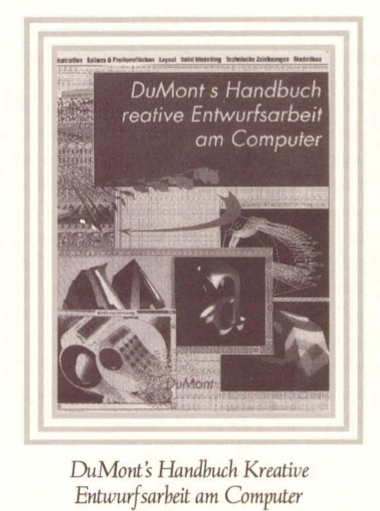The high chances that a critic of photography has been responsible for the taking of a photo himself are by no means due to the coincidence of professional wits with amateurish whims, unless one belongs to the one or two percent minority who did not shoot a photo before having had his or her first kiss. A throw away camera works as well for a child as for a film critic to teach some of thebasic principles of picture making. So comparatively easy are the procedures of photo and film production that by leisurely leaning back in the chair of the alert receptionist you are able to witness and decipher whole complex metaphors in a movie, as was intended by, say, Jean-Luc Godard or Rainer Werner Fassbinder.
Chairs in video and computer graphic studios differ in more than one respect from the folding kind. In fact, making an electronic image or a video-sequence of images takes in fact - apart from the inherently dynamic and costly technology - a comfortable chair, if only for its upholstered edge to suspend an observing amateur, who tries to learn from watching and who does not want to swap his literal aesthetic afterthoughts for a thorough computer training. And how much would it really help to become a pale gazer in order to understand what is probably the least visual way of image making.
Looking to literature for subterfuge, we came across Kreative Entumrfsarbeit am Computer, a rare German introduction into computer-graphics design, written by. Mischa Schaub, a Swiss designer with a background as sculptor. In his book, Schaub develops a design approach which puts the responsibility of the designer, the significance of his or her design, and the ethics of technology in one context. This context backlights the practicaldesign processes which are explained in the book step by step.
Schaub sets himself the task of designing an ... electronic design kit - Central Processing Unit, electronic pen/cil, brush, and spray. This serves as a concrete example which is developed through the different stages: sketching the sketch device, structure mapping, simulating material tests, colour mapping, display, etc. Sketches, drawings and pictures illustrate the different stages.
Like all explanatory texts this book has to grapple with thechoice of the structural level on the one hand, leaving a choice between the more theoretical basics and the designers applications, and the dynamic technical development of the tools on the other. Schaub opts for a more ready-to-use approach, addressing a generation of designers which enjoys the achievements of a more comfortable access to design electronics. Schaubs book makes others such as Robert Rivlin’s Algorithmic Image look comparatively old, but by no means useless.
Since it is more an introduction than a ‘handbook’, it serves the student or professional designer as a valuable guide. Although the author himself fosters the interconnections between the design of objects and the design of designers tools, the book does not satisfy the curious researcher - however, it does not discourage the naive novice either. Where ‘real’ handbooks delve into algebraic functions and geometric explanations of modelling, lighting or orientation in space, Schaub is much more concerned with the visual results achieved by using a specific software and less with algebraic or algorithmic principles. This software oriented view becomes rather blurry towards the end, where the descriptions of how to work with different programmes become a computerese shorthand. Accordingly, we miss a German-English glossary of the most important terminology as well as indexes of some books and current magazines.
Despite of its incompleteness and even its limited practical use because of the examples chosen, Schaub comes as close to a concrete introduction into electronic graphics as one can probably come. I appreciated the way he reduces technical theory in favour of a design practice guided by aesthetic strategy, in order to make significance and intention reemerge in somewhat amorphous technological imagery.
Mediamatic Magazine vol 5#3 1 Jan 1990
DuMont's Handbuch Kreative Entwurfsarbeit am Computer
Mischa Schaub DuMont Köln 1989, German text, pp. 158
